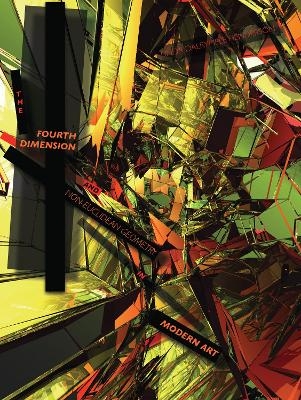
The Fourth Dimension and Non-Euclidean Geometry in Modern Art
Seiten
2018
|
revised edition
MIT Press (Verlag)
978-0-262-53655-4 (ISBN)
MIT Press (Verlag)
978-0-262-53655-4 (ISBN)
- Titel z.Zt. nicht lieferbar
- Versandkostenfrei innerhalb Deutschlands
- Auch auf Rechnung
- Verfügbarkeit in der Filiale vor Ort prüfen
- Artikel merken
The long-awaited new edition of a groundbreaking work on the impact of alternative concepts of space on modern art.
In this groundbreaking study, first published in 1983 and unavailable for over a decade, Linda Dalrymple Henderson demonstrates that two concepts of space beyond immediate perception-the curved spaces of non-Euclidean geometry and, most important, a higher, fourth dimension of space-were central to the development of modern art. The possibility of a spatial fourth dimension suggested that our world might be merely a shadow or section of a higher dimensional existence. That iconoclastic idea encouraged radical innovation by a variety of early twentieth-century artists, ranging from French Cubists, Italian Futurists, and Marcel Duchamp, to Max Weber, Kazimir Malevich, and the artists of De Stijl and Surrealism.
In an extensive new Reintroduction, Henderson surveys the impact of interest in higher dimensions of space in art and culture from the 1950s to 2000. Although largely eclipsed by relativity theory beginning in the 1920s, the spatial fourth dimension experienced a resurgence during the later 1950s and 1960s. In a remarkable turn of events, it has returned as an important theme in contemporary culture in the wake of the emergence in the 1980s of both string theory in physics (with its ten- or eleven-dimensional universes) and computer graphics. Henderson demonstrates the importance of this new conception of space for figures ranging from Buckminster Fuller, Robert Smithson, and the Park Place Gallery group in the 1960s to Tony Robbin and digital architect Marcos Novak.
In this groundbreaking study, first published in 1983 and unavailable for over a decade, Linda Dalrymple Henderson demonstrates that two concepts of space beyond immediate perception-the curved spaces of non-Euclidean geometry and, most important, a higher, fourth dimension of space-were central to the development of modern art. The possibility of a spatial fourth dimension suggested that our world might be merely a shadow or section of a higher dimensional existence. That iconoclastic idea encouraged radical innovation by a variety of early twentieth-century artists, ranging from French Cubists, Italian Futurists, and Marcel Duchamp, to Max Weber, Kazimir Malevich, and the artists of De Stijl and Surrealism.
In an extensive new Reintroduction, Henderson surveys the impact of interest in higher dimensions of space in art and culture from the 1950s to 2000. Although largely eclipsed by relativity theory beginning in the 1920s, the spatial fourth dimension experienced a resurgence during the later 1950s and 1960s. In a remarkable turn of events, it has returned as an important theme in contemporary culture in the wake of the emergence in the 1980s of both string theory in physics (with its ten- or eleven-dimensional universes) and computer graphics. Henderson demonstrates the importance of this new conception of space for figures ranging from Buckminster Fuller, Robert Smithson, and the Park Place Gallery group in the 1960s to Tony Robbin and digital architect Marcos Novak.
Linda Dalrymple Henderson is David Bruton, Jr., Centennial Professor in Art History and Regents Outstanding Teaching Professor at the University of Texas at Austin. She is the author of Duchamp in Context: Science and Technology in the Large Glass and Related Works and Reimagining Space: The Park Place Gallery Group in 1960s New York and coeditor of From Energy to Information: Representation in Science and Technology, Art, and Literature.
| Erscheinungsdatum | 26.06.2018 |
|---|---|
| Reihe/Serie | Leonardo |
| Zusatzinfo | 140 b&w illus.; 280 Illustrations |
| Sprache | englisch |
| Maße | 178 x 229 mm |
| Themenwelt | Kunst / Musik / Theater ► Antiquitäten |
| Kunst / Musik / Theater ► Kunstgeschichte / Kunststile | |
| ISBN-10 | 0-262-53655-2 / 0262536552 |
| ISBN-13 | 978-0-262-53655-4 / 9780262536554 |
| Zustand | Neuware |
| Haben Sie eine Frage zum Produkt? |
Mehr entdecken
aus dem Bereich
aus dem Bereich
von 1710 bis zur Gegenwart
Buch | Hardcover (2021)
Battenberg (Verlag)
29,90 €


